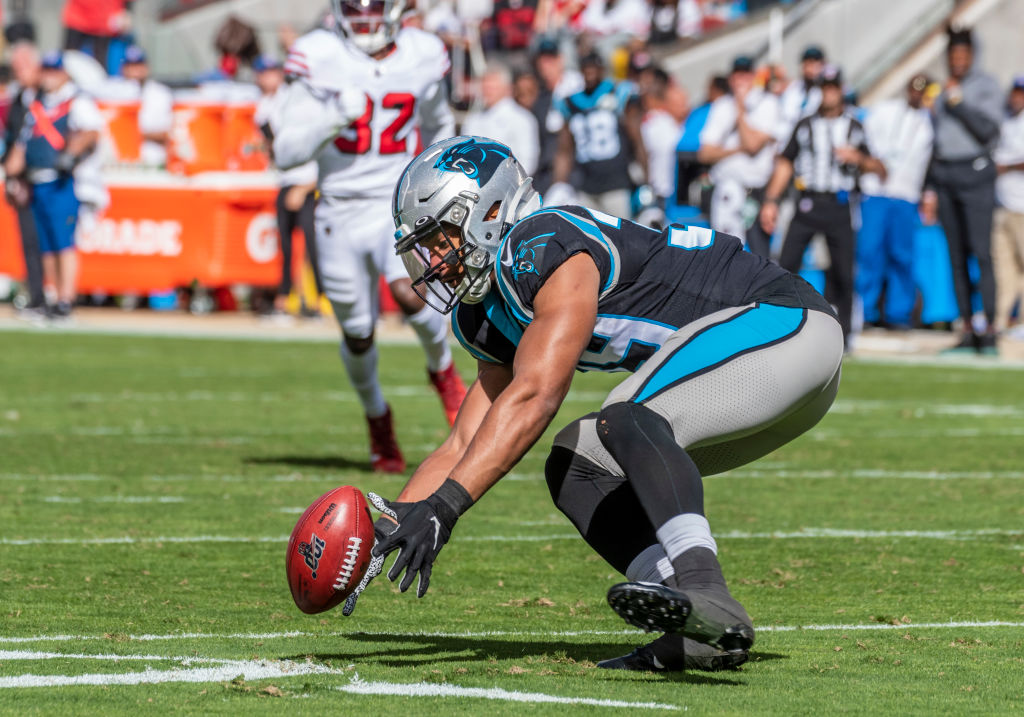NFL
NFL: Here's Why We Don't See Kickoff Returns Anymore

In the past, few plays in sports were as hectic as an NFL kickoff. When a player opts to return it, kickoff returns can be incredibly fast-paced and have a huge impact on field position. But the keyword there is “opts.” Fewer and fewer players are returning kicks in the modern NFL. Here's why we don't see kickoff returns anymore.
The pros and cons of kickoff returns
The main benefit of returning a kick is fairly evident: It increases the chance of a team improving its field position. Historically, a kickoff return specialist has helped teams advance the ball before taking a snap. Players like former Washington Redskins return man Brian Mitchell or former Chicago Bears kick returner Devin Hester were especially talented at this.
The drawback? Kickoff returns are highly risky for players on both sides. In 2018, The Ringer lamented the presence of kickoffs in the NFL: “The NFL says a kickoff is five times as likely to cause concussions than a scrimmage play — and if the NFL acknowledges that something is dangerous, it's probably really freakin' dangerous.”
Not only do kickoff returns cause injuries in the NFL; they affect college and high school football, too. The Ringer explained, “A disproportionately high number of the high school athletes who have died playing football have died on kickoffs.” So if the play itself is fairly dangerous, how has the NFL treated rules surrounding kickoff returns in recent years?
How the NFL has discouraged kickoff returns
Sam Farmer interviewed former kick returners like Mitchell in a piece on the death of the kick return in the NFL. According to Farmer, as early as 10 years ago, 76.4% of kickoffs during the season's first month were returned. In 2019, nearly 75% of kickoffs go for touchbacks.
From the NFL's perspective, this is by design. The league has taken several steps to limit the impact of kickoffs with rule changes, including:
- Moving kickoffs to the 35-yard line in 2011. Kicks were previously made from the 30.
- In 2016, touchbacks were brought to the 25-yard line instead of the 20.
- The NFL also made it illegal for teams to perform “blocking wedges.”
- In 2018, the NFL banned coverage teams from getting a running start. Eight of the 11 players on the kickoff team needed to stay in a “setup” zone, which was a 15-yard area near the 50-yard-line.
It isn't hard to see the league's intent behind these rules. They're all meant to make it easier for teams to kick through the back of the end zone while encouraging the returning teams to accept touchbacks on the ones they do catch.
The future of the kickoff return
The NFL seems to want to drive teams away from returning kicks due to the increased chance of injury. As offenses become more adept in the passing game, the teams themselves are okay with this. After all, the chance of starting on the 25-yard line isn't as bad as losing a key receiver, running back, or cornerback.
As the NFL continues to focus on player safety, it wouldn't be surprising if kickoff returns are phased out altogether. If the league and its teams are determined to limit the effectiveness of kick returners, eventually eliminating the practice looks like the logical evolution.











